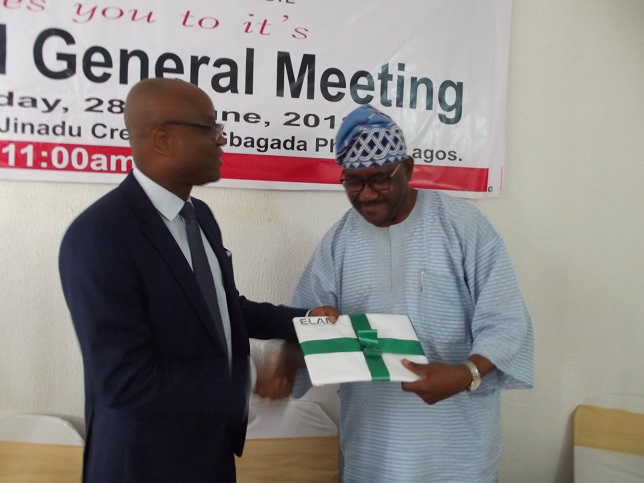CHAIRMAN SPEECH AT FLEET MANAGEMENT CONFERENCE
Directors of ELAN Distinguished Guest Speakers Distinguished Participants Gentlemen of the Press Ladies and Gentlemen I am very delighted to welcome…
Read MoreELAN Visits Toyota Nigeria Limited
The Equipment Leasing Association of Nigeria (ELAN) recently paid a courtesy visit to Toyota Nigeria Limited on the 15th of March 2019. The visit…
Read MoreIFRS 9 Financial Instruments
The International Financial Reporting Standards (IFRS) 9 on Financial Instruments came into effect on 1st January 2018. The standard includes requirements for recognition and…
Read MoreCOMMUNIQUE ISSUED AT THE 16TH NATIONAL LEASE CONFERENCE 2018
COMMUNIQUE ISSUED AT THE 16TH NATIONAL LEASE CONFERENCE ORGANISED BY THE EQUIPMENT LEASING ASSOCIATION OF NIGERIA (ELAN), HELD ON THURSDAY, 15TH NOVEMBER 2018 AT…
Read MoreCHAIRMAN’S SPEECH AT THE 16TH NATIONAL LEASE CONFERENCE 2018
WELCOME ADDRESS BY MR OLUTOYIN OKEOWO, CHAIRMAN, BOARD OF DIRECTORS, EQUIPMENT LEASING ASSOCIATION OF NIGERIA (ELAN) AT THE 16TH ANNUAL NATIONAL LEASE CONFERENCE…
Read MoreCOMMUNIQUE ISSUED AT EXECUTIVE BUSINESS FORUM
COMMUNIQUE ISSUED AT THE EXECUTIVE BUSINESS FORUM “UNDERSTANDING AND PREPARING FOR IFRS 16” ORGANISED BY THE EQUIPMENT LEASING ASSOCIATION OF NIGERIA (ELAN) HELD…
Read MoreCHAIRMAN’S SPEECH AT EXECUTIVE BUSINESS FORUM
WELCOME ADDRESS BY MR OLUTOYIN OKEOWO, CHAIRMAN, BOARD OF DIRECTORS, EQUIPMENT LEASING ASSOCIATION OF NIGERIA (ELAN) AT THE EXECUTIVE BUSINESS FORUM “UNDERSTANDING AND…
Read MoreELAN ELECTS NEW BOARD OF DIRECTORS
The Equipment Leasing Association of Nigeria (ELAN) recently held its 23rd Annual General Meeting (AGM) in Lagos. Major highlights of the meeting include…
Read MoreELAN VISITS MEMOSE INTERNATIONAL LIMITED
The Equipment Leasing Association of Nigeria (ELAN) recently paid a courtesy visit to Memose International Limited. The visit is part of the Association’s…
Read More










